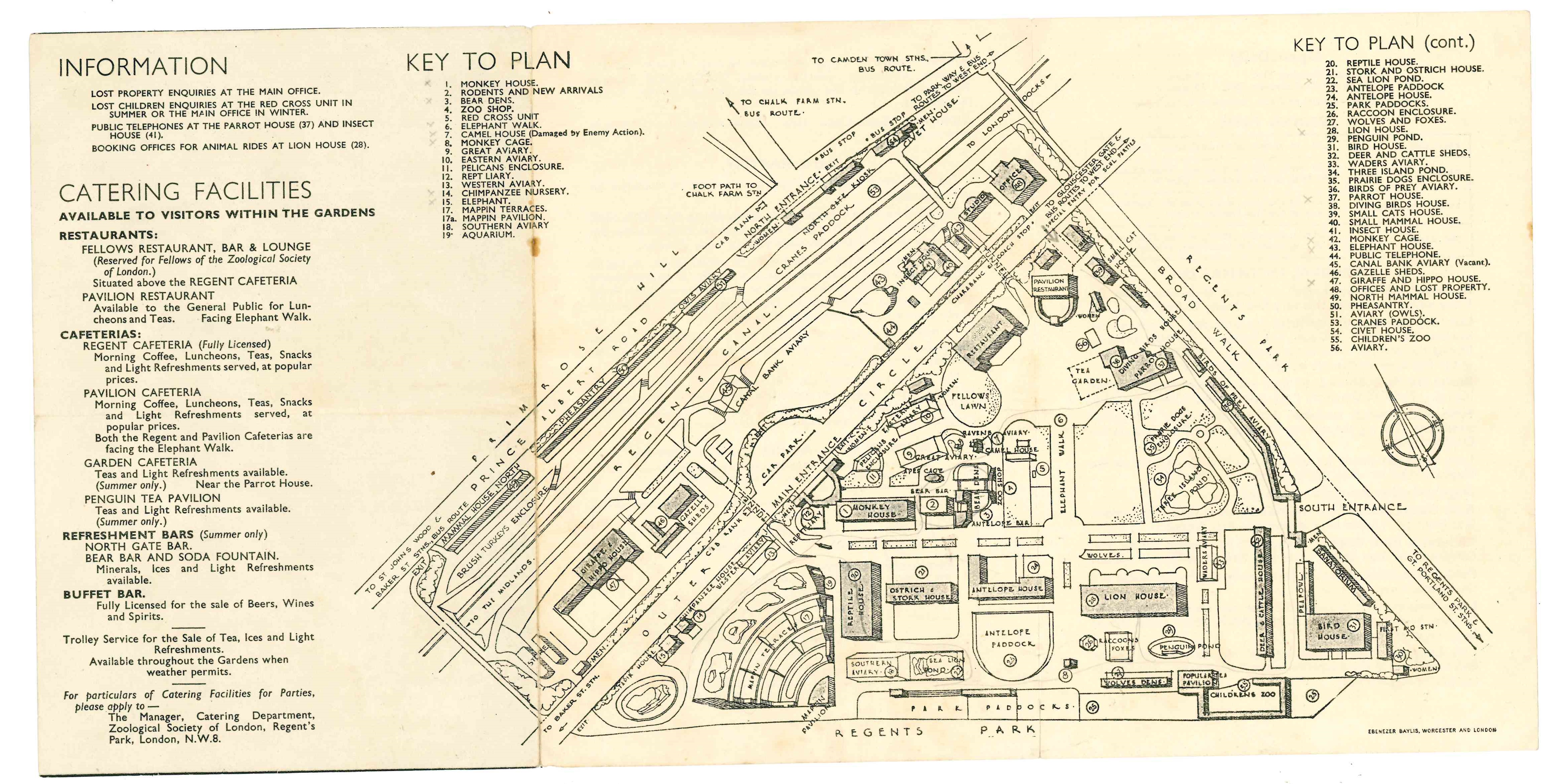
June 2019: A self-seeded part of 2018’s Ribbon of Poppies at Newquay Zoo’s World War Zoo Garden.
Three of the Wild Planet Trust sites in Devon (our conservation charity formerly known until this year as the Whitley Wildlife Conservation Trust) have D-Day connections worth exploring 75 years on from the Normandy Invasion of 6th June 1944
as did members of Herbert Whitley, our founders’ family.
75 years ago today
What should have been D-Day – the 5th June 1944 -was wet and stormy. The invasion was postponed for a day. Many troops were stuck on landing craft, being seasick.
A curious HMSO 1944 diary in our collection from Devon records:
Friday 2 June 1944: large movement of forces and equipment
Saturday 3 June 1944: ditto
Sunday 4 June 1944: boarding for Exercise Category A
Monday 5th June 1944 “En -boarding for Exercise. Weather heavy swell / Storm.”
6th June – No Entry
D-Day and our Zoos?
I have posted about our Zoos and D-Day several times since the 65th anniversary in 2009, the year our wartime garden project started at Newquay Zoo.
2016: https://worldwarzoogardener1939.wordpress.com/2016/06/06/remembering-d-day-6th-june-1944/
2014: https://worldwarzoogardener1939.wordpress.com/2014/08/28/war-and-the-whitleys-para-medics-peacocks-and-paignton-zoo/
2010: https://worldwarzoogardener1939.wordpress.com/2010/06/23/d-day-1944-and-the-disappearing-peacocks-and-ducks-of-wartime-paignton-zoo/
D-Day saw a strange emptying of many south coast and west country towns in Devon and Cornwall, as hundreds of thousands of US, Canadian and British troops quietly left their army camps and headed for the Normandy beaches from 6 June 1944 onwards.
Camped in tents across many parts of Devon were the IVth (4th) Division of the US infantry, known from their Division badge as the IV boys or Ivy boys. On 6th June 1944 they would leave the safety of the Torbay marshalliing area of Devon to assault Utah Beach.

One possible wartime Paignton Zoo site of Clennon Gorge quarries, possible site for US troops GI cookhouse / campsite before D-Day June 1944, cleaned up after the war to become a now peaceful nature reserve at Paignton Zoo. (Taken Nov. 2010)
Clennon Gorge / Paignton Zoo June 1944: Under the leafy cover of trees, save from aerial observation, some of the young American servicemen had interesting last suppers.
Part of the Paignton Zoo estate is the nature reserve at Clennon Gorge in Devon, featuring wildfowl ponds and a stream through a limestone valley and quarries down to the sea.
This part of Herbert Whitley’s estate was being developed in the 1930s just before the outbreak of war. Whitley had vision of wildfowl ponds, woodland haunts of a wolf enclosure, old lime kilns turned into small mammal dens and converting old quarries into bear and carnivore enclosures, much in the style of Carl Hagenbeck’s zoo at Hamburg in Germany.
Work had been completed by stonemasons on the first bear dens when war broke out in 1939. The bears never arrived in their dens, but the quarry enclosures were used as cookhouses for US troops camping in the adjoining zoo paddocks whilst waiting for D-Day in 1944.

Cheeky Peafowl, garden pest of my World War Zoo gardens allotment at Newquay Zoo, 2010.
As Jack Baker wryly notes in the ‘Blue Book’ or Chimps, Champs and Elephants, his history of Whitley and Paignton Zoo’s early days, “A clearing up exercise provided ample evidence that many a zoo peacock and ornamental bird had varied the diet of the visiting ‘doughboys’ …”
I think you can forgive them this, knowing what hell awaited the G.I. American Infantry of the “Ivy boys” on the beaches of Normandy.
Before you head off to Clennon Gorge with a metal detector, I checked with Reserves Warden Dave Ellacott, our man on the ground there, nothing remains of the GI presence there from this period, other than the quarries.
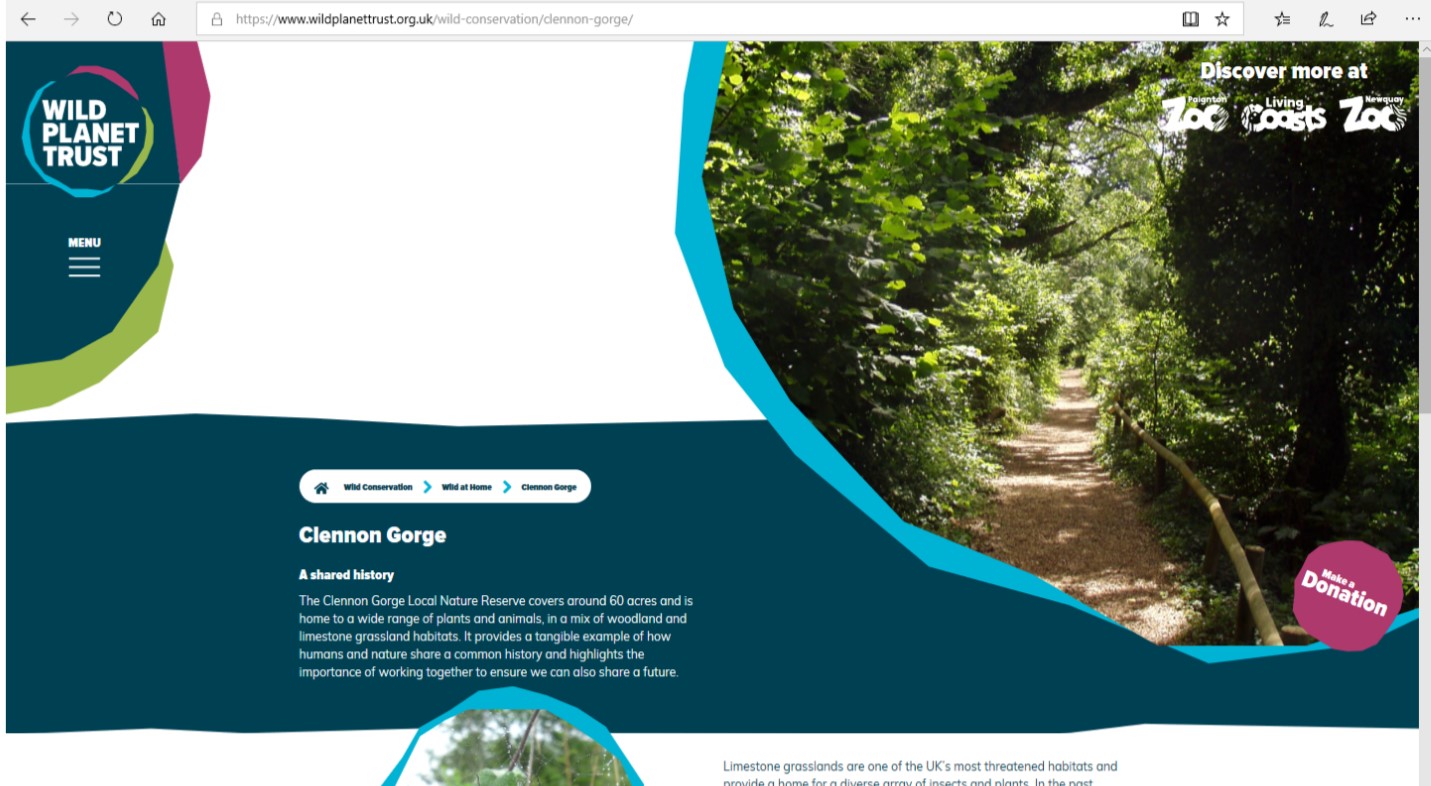
Sadly despite appeals in their veterans’ newsletter, we have unearthed no further memories of this unusual last supper incident from the veterans or their families of the US 4ID association, once encamped at Paignton Zoo.
Many of these American Ivy Boys would head off from Embarkation Points or Concrete Hards like the one built by American Army Engineers next to Living Coasts. https://www.geograph.org.uk/photo/1500735 Others survive along the coastlines of Cornwall such as at Trebah Gardens. .

Memorial / marker for The Hards or D-Day Embarkation Ramps next to Living Coasts in Beacon Quay.
This American “Friendly Invasion” by the Ivy Boys is well covered in Gerald Wasley’s excellent 1939-45 history book Devon at War.

Third left – Derek Witney, former staff member at Chessington Zoo, spent part of his wartime childhood with the Chessington staff evacuated to Paignton Zoo and remembers the Americans. (Photo: Derek visiting me at Newquay Zoo with members of his family, 2014.)
Retired Chessington Zoo staff member Derek Witney remembers Paignton Zoo from the Chessington evacuation to Paignton Zoo and wartime partnership as Devon’s Zoo and Circus from 1940-1945: he remembers Mr. Whitley, the American troops and large American guns ringing the hills around Paignton, possibly Anti-Aircraft Guns.
Read more of his story: https://worldwarzoogardener1939.wordpress.com/2015/10/02/chessington-zoo-blitzed-2-october-1940-eyewitness-accounts/

The now peaceful Slapton Ley, the freshwater pool beside the sea bought by Herbert Whitley to protect it from development in 1921, was also in a troop training area for practising amphibious invasion tactics for the US Vth Division.
Herbert Whitley bought the unique Slapton Ley area to save it from commercial exploitation. Slapton Ley and its surrounding beaches and rural area became part of a massive US Army live firing training ground in 1943-4 before D-Day, although amphibious landing training had happened there several years before War broke out. This area saw the accidental deaths in training during Exercise Tiger on April 28th 1944.
An unofficial memorial, a Sherman tank salvaged from the sea bed nearby and a more official US war memorial cross records the US forces thanks to the sacrifice of local people in giving up their homes and farms now stand near the beach, remembering the wartime losses.

Exercise Tiger dates in my curious 1944 Diary / Matchbox cover Album
Read more about Exercise Tiger, the Americans and D-Day in Devon through the mystery of a curious matchbox label album from 1944 in my collection :
https://worldwarzoogardener1939.wordpress.com/2014/06/01/d-day-and-a-curious-1944-matchbox-diary/

A more private loss was Herbert’s nephew Edward:
Herbert’s nephew Captain Edward Neil Whitley (born c. 1918), Service No: 252025, Royal Army Medical Corps serving with the Parachute Regiment. He died back in England on 29th August 1944 of shrapnel wounds received four days after landing on D-Day 6 June 1944. His gravestone reads interestingly:
“Who landed in Normandy on D Day with the 6th Airborne Division,
was wounded by mortar fire on June 10th while succouring a foeman”
suggesting that he died whilst treating a German casualty.
https://www.paradata.org.uk/media/collection/429
Edward literally was a ‘para – medic’ as he parachuted in with the British 6th Airborne Division paratroops on D-Day June 1944 and is pictured on the Para-data history website along with documents to his mother and photographs.
Newquay Zoo

Newquay Zoo was not built until 1969, one of the successful and surviving animal collections from amongst the many post-war zoos from the 1950s and 1960s.
Between the years 2000 and 2004 one of the regular contributors to our Paw Prints Zoo Newsletter was regular visitor Peter Dwyer.
Peter wrote articles about wildlife in Cornwall and in Newquay Zoo, often stressing the peace and calm of watching wildlife around Cornwall or in a good modern zoo. We have been steadily reprinting Paw Prints as part of our Newquay Zoo history blogposts and are now reaching this 2000-2004 period. https://newquayzoohistory.wordpress.com
What Peter rarely talked about was his Navy days as a young man during WW2 including his involvement with D-Day and the Normandy Invasion as a 22 year old sailor. It is mentioned occasionally in his book Nature Notes from a Cornish Parish published in paperback in 2000 with pictures by Suzanne Pearce (Illustrator).

Although I have not seen Peter for many years (and hope he is still with us) Peter is remembered in the zoo with a special seat for his 80th Birthday in December 2001.

Remembering those involved in D-Day and the Normandy invasions and its connection to our zoo sites and many people of Cornwall and Devon – we will remember them.

Posted by Mark Norris, World War Gardens project, Newquay Zoo 5 June 1944
1944 Blog Post Script
You may be interested to read about “The D-Day Dodgers” as they were known, the fierce fighting of the Italian Campaign that cost the lives of several Kew Gardens staff:
https://worldwarzoogardener1939.wordpress.com/2019/05/16/remembering-j-g-jack-mayne-16th-may-and-the-kew-gardens-casualties-of-1944/
1944 would also see the arrival of the V1 Flying Bombs that menaced London Zoo and Chessington Zoo amongst others, which we will cover in a future blogpost:

Diary of Vera Richardson, South London woman involved in Civil Defence, 1944 – D-Day, Tuesday 6 June 1944 “D-Day Invasion started. Troops landed at Cherbourg. Went to Clapham & Brixton and to Oberon …”
Note also the entry for Thursday 15 “Germany started sending pilot-less planes” – the first mention in the diary of V1 “doodlebugs” (Copyright: Diary in Mark Norris’ wartime life collection) Watch this space.
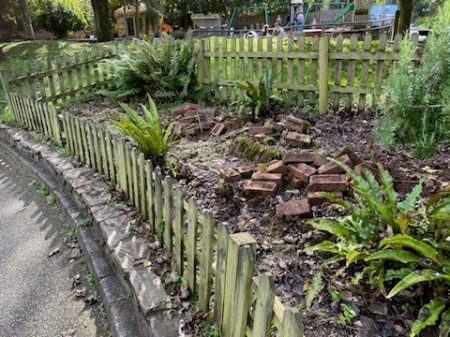
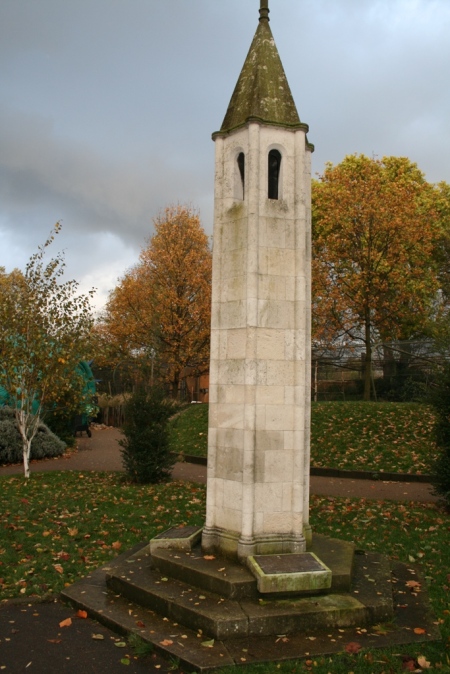
 This Victorian ‘theme park’ or leisure gardens creation of Belle Vue Zoo closed in the mid 1970s.
This Victorian ‘theme park’ or leisure gardens creation of Belle Vue Zoo closed in the mid 1970s.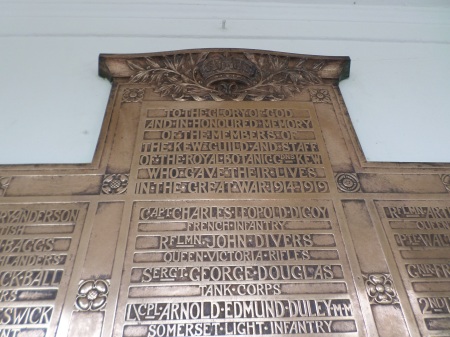

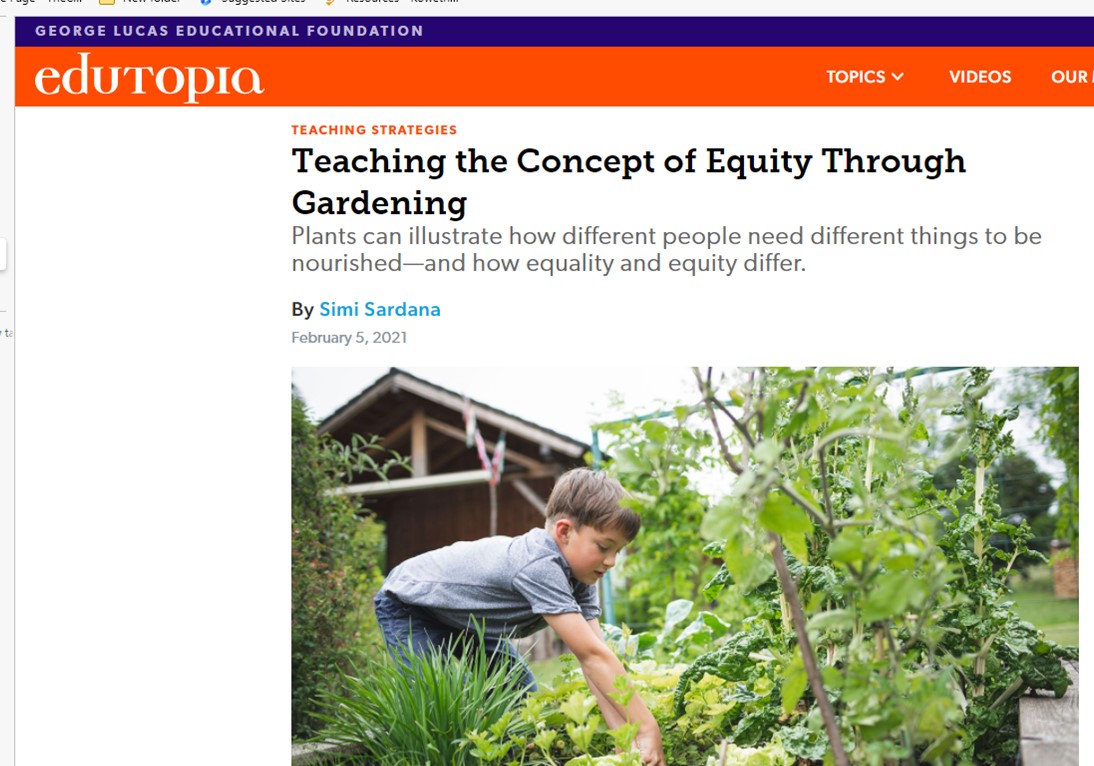

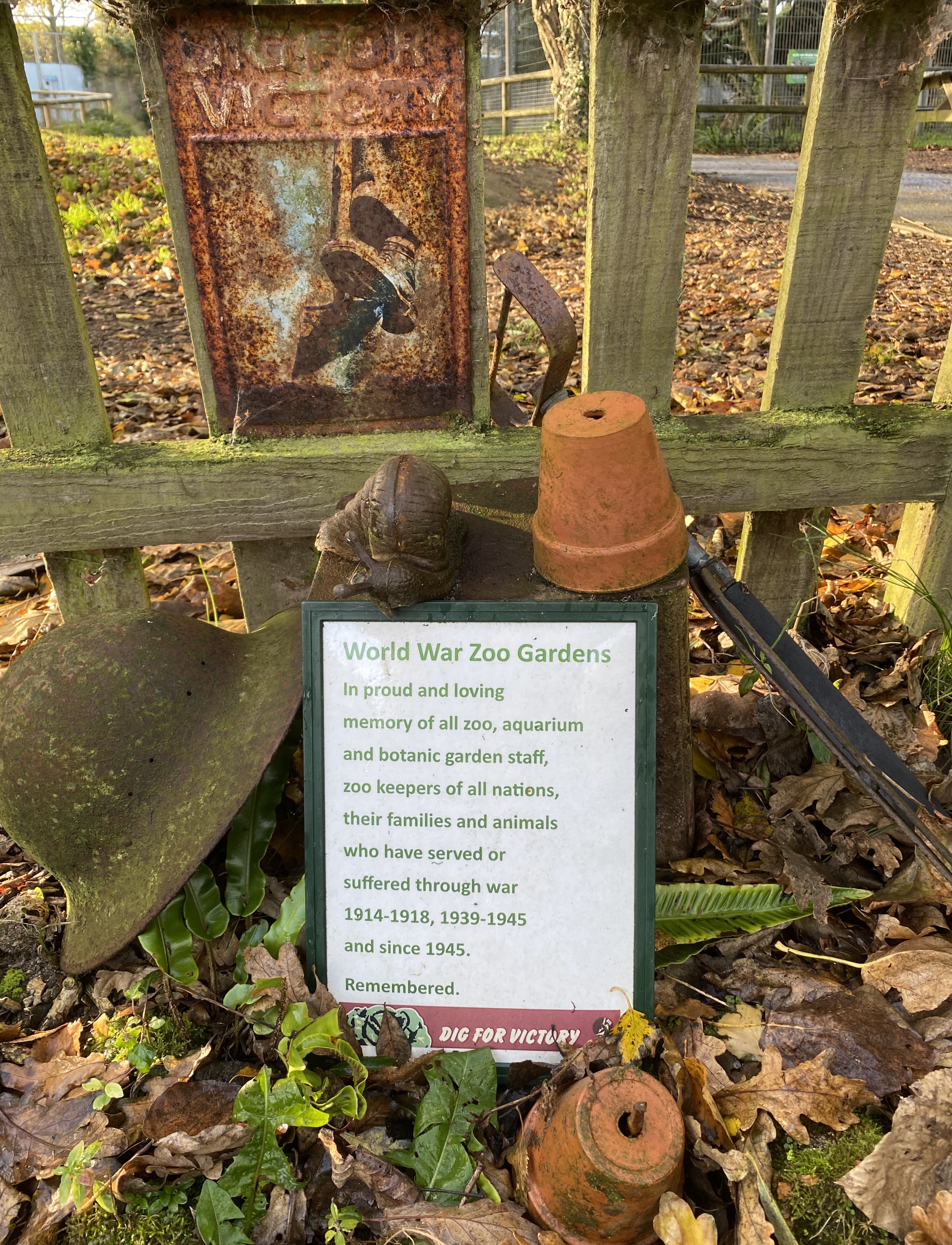



![IMG_E2180[1] Yellow Welsh poppies pop up again in our cleared allotment, heralding lots of wildflowers and pollinators](https://worldwarzoogardener1939.files.wordpress.com/2021/05/img_e21801.jpg?w=446&resize=446%2C390#038;h=390)






















